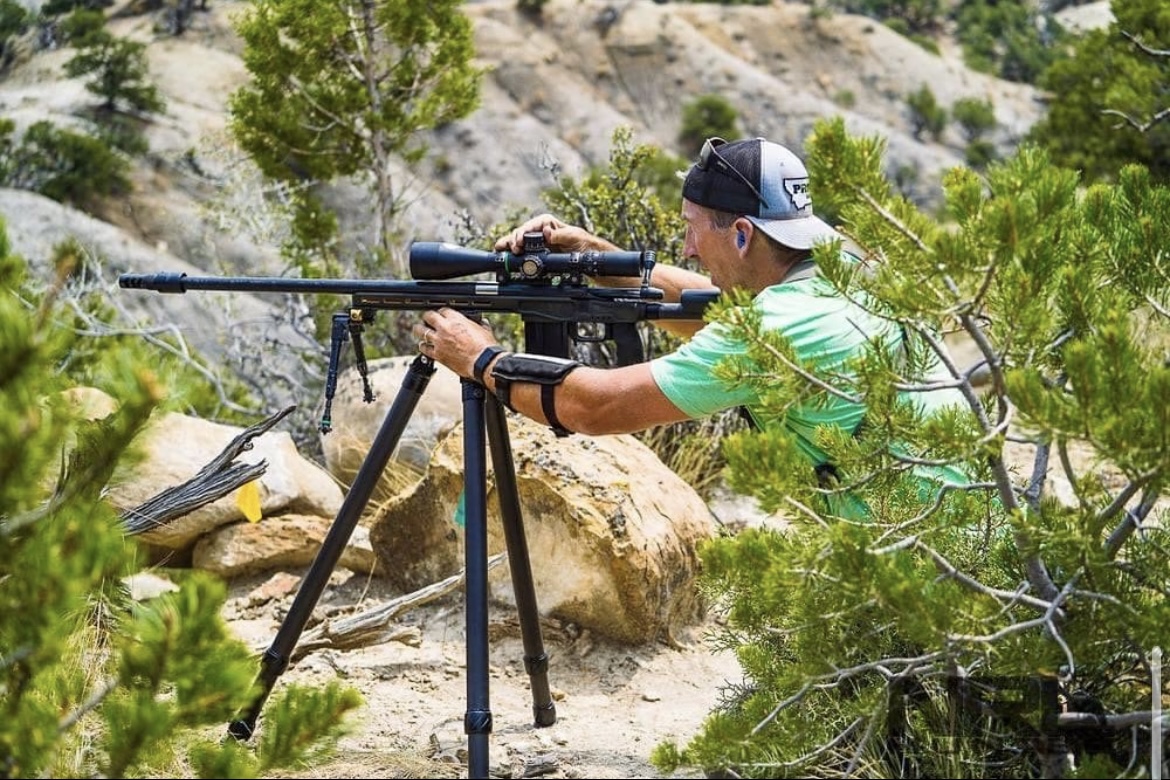
The NRL Hunter series is a precision rifle competition designed to test a shooter’s ability to locate, range, and engage targets under simulated hunting conditions. NRL Hunter prioritizes fields hooting, efficiency, and adaptability over pure mechanical accuracy. This guide outlines key aspects of the NRL Hunter event, common challenges, and strategic takeaways for competitors looking to improve their performance.
Event Structure and Stage Setup
- Stage Format: Each stage requires competitors to locate targets, determine their distances, and engage them within a set time limit.
- Target Presentation: 1-4 targets per stage, often mimicking real-world animal placements and shapes.
- Scoring:
- First-round impacts score higher than second-round impacts.
- Non engaged targets and missed engagements result in zero points.
- Competitors must balance field skills and precision.
- Equipment Rules:
- Shooters are required to carry all gear throughout the match.
- Restrictions on equipment may apply depending on division.
- Binos with integrated rangefinders are commonly used but must be used efficiently within the time constraints.
Common Challenges and Solutions faced at teh NRL Hunter series competitions
1. Target Identification & Acquisition
- Problem: Many competitors struggle with quickly locating targets.
- Solution:
- Develop a systematic scanning approach that works for you (e.g., left to right, nearest to farthest, whatever your system make sure it works for you and has been tested prior to going to the match).
- Use terrain features and distinct landmarks to mentally map target locations.
- Train with different backdrop and lighting conditions to improve recognition speed.
2. Transitioning Between Optics & Rifle
- Problem: Time is wasted switching between binoculars and rifle scope.
- Solution:
- Use a consistent process: locate with binos, range, then move to find next targets and once found don’t waste time moving into the rifle.
- Pre-set the rifle scope magnification at a balance between FOV and target clarity
3. Data Management & Corrections
- Problem: Shooters fumble with dope cards or forget wind adjustments.
- Solution:
- Use a minimalist data card or armboard with critical dope and wind holds.
- Train to reference dope instinctively rather than relying on looking down.
- Practice quick mental math for wind holds based on pre-determined brackets.
4. Shooting Positions & Stability
- Problem: Inconsistent positions lead to missed shots.
- Solution:
- Prioritize stable, repeatable positions over rushed shots.
- Utilize natural supports (rocks, trees) when possible.
- Train for rapid bipod and tripod deployment and adjustment.
- Work on unusual angles and uneven terrain.
5. Managing Stress & Time Pressure
- Problem: Competitors often time out before engaging all targets.
- Solution:
- Use a rehearsed mental checklist: Find, Range, Dial, Build Position, Shoot.
- Establish personal time splits for locating, ranging, and engaging.
- Avoid over-aiming—commit to breaking shots within a reasonable cadence.
- Don’t skip engaging the targets you have found to find missing ones, at a drop dead time you have to shoot what you have.
Key Takeaways & Training Focus for NRL Hunter series
- Efficiency Over Complexity
- Reduce reliance on excessive gear; prioritize familiarity with core equipment.
- Simplify data management—have only essential information readily accessible.
- Target Acquisition & Range finding Drills
- Practice locating, ranging, and engaging targets within a 2 minute window.
- Work on identifying distances visually before confirming with a rangefinder.
- Wind Reading & Adjustment
- Develop a process for quickly estimating wind and applying adjustments.
- Use a consistent reference (e.g., Quick Wind method) to avoid hesitation.
- Shooting Positions & Transitions
- Train on unstable and natural surfaces to simulate real match conditions.
- Build efficiency in moving between positions with minimal wasted motion.
- Mental Preparation & Time Awareness
- Use dry-fire and live-fire scenarios with time constraints to build stage awareness.
- Implement breathing and visualization techniques to manage match-day stress.
- Know where your skills are at TODAY and where they need for you to achieve goal.
Final Thoughts
NRL Hunter challenges a competitor’s ability to think critically under pressure while maintaining fundamental shooting proficiency. Success comes from refining a repeatable process for locating, ranging, and engaging targets efficiently. By focusing on realistic training scenarios, gear efficiency, and mental preparedness, shooters can significantly improve their performance and overall match results. To see the full series search for the NRL Hunter Playbook on HideTV or Youtube.


